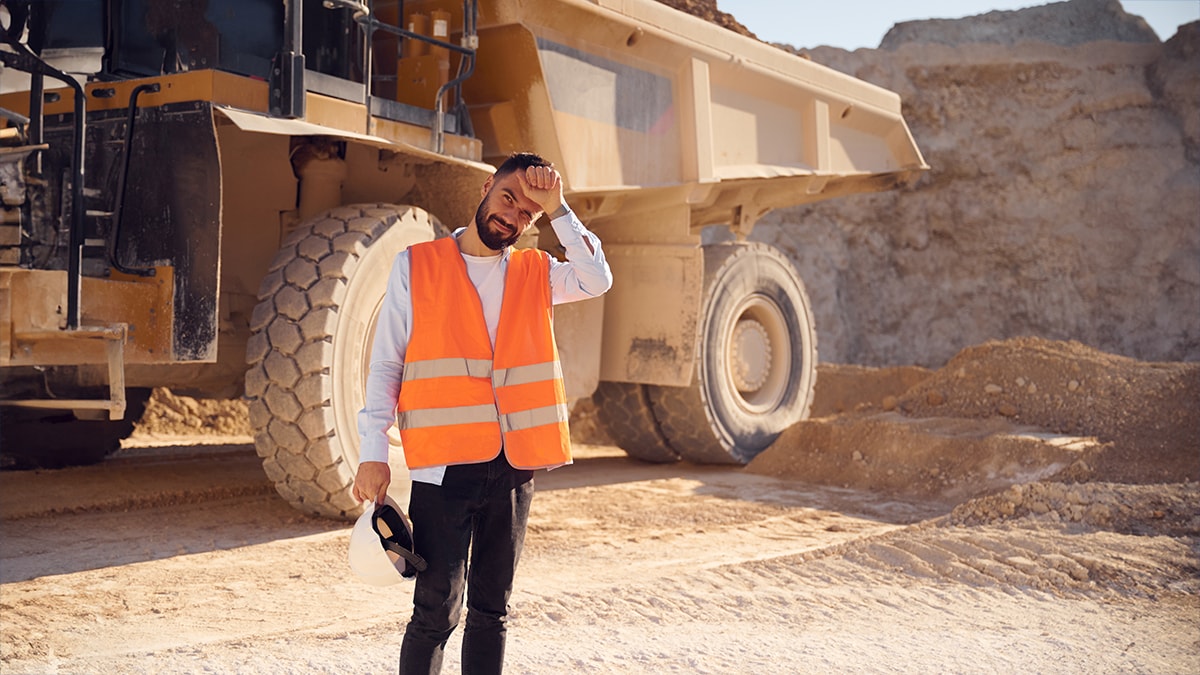Release
To help mine workers stay safe while on the job this summer, the National Institute for Occupational Safety and Health (NIOSH) offers resources for employers and workers to help tackle working in extreme heat and hot mine settings.

Heat stress is a real danger in mining. Without proper prevention strategies, exposure to heat can lead to several serious outcomes, such as heat exhaustion, heat stroke, and organ damage. Some research also suggests a link between heat exposure and an increased risk for worker injuries, such as slips, trips, and falls. Mine workers are experiencing an increase in dangerous health effects from heat exposure as surface temperatures get hotter and underground mines get deeper.
To help mine workers stay safe while on the job this summer, the National Institute for Occupational Safety and Health (NIOSH) offers resources for employers and workers to help tackle working in extreme heat and hot mine settings.
Who is at risk?
Any mine worker who is exposed to hot and humid conditions is at risk for a heat-related illness. Additionally, miners who are new to the job or not fully acclimatized, 65 years of age or older, are overweight, have heart disease or high blood pressure, or take certain medications are at greater risk for a heat-related illness.
"Reducing heat stress and preventing heat-related illnesses is vital for both employers and workers, especially when summer temperatures peak and exposure to hot mine environments are part of the job," said Kristin Yeoman, M.D., medical officer in NIOSH's Spokane Mining Research Division. "Additionally, employers should be aware that performing tasks requiring high physical effort, even under moderate environmental conditions, can increase the risk for heat-related illnesses."
NIOSH offers several recommendations and resources that employers and mine workers can use to help prevent heat-related illness, injury or death.
How to stay safe when working in heat
Some examples of NIOSH recommendations that employers or workers can apply in many different work settings include:
- Limit time in the heat and/or increase recovery time in a cool environment.
- Increase the number of workers per task.
- Train supervisors and workers about heat stress, including symptoms of heat-related illness, first aid, and risk factors.
- Use a buddy system where workers observe each other for signs of heat-related illness.
- Provide adequate amounts of cool, potable water near the work area and encourage workers to drink frequently.
- Use a heat alert program (additional written guidelines) whenever the weather service forecasts that a heat wave is likely to occur.
- Develop a plan to get employees acclimatized to hot work conditions and to increase physical fitness.
Free resources for mine employers and workers
Keeping Cool: Training to Reduce Heat Stress Incidents in Mines
Keeping Cool is an online training module designed to help mine workers understand and reduce their risk factors for heat-related illness.
During this instructor-led training, learners assess a fictional crew of miners and participate in small group discussions on the crew's risk factors and signs and symptoms of heat-related illness. Keeping Cool's instructor's guide allows any individual at a mine site to facilitate the training, regardless of their knowledge of heat stress. The training is applicable to any mining environment, and users can modify it to meet different training needs and time constraints.
"As we near the summer months, it's critical that all mine workers receive training on heat," said Yeoman. "The Keeping Cool training module is an efficient way to improve miners' understanding of their risk factors for heat illness and how they can reduce those risks."
Heat Stress: A Series of Fact Sheets for Promoting Safe Work in Hot Mining Settings
This set of heat stress fact sheets offers practical information in English and Spanish about working in hot mining conditions. These fact sheets are intended to be used together as a set, but each fact sheet can also stand alone. Topics include acclimatization, hydration, work/rest schedules, first aid for heat illness, and more.
Heat Stress: Understand Heat Stress Risk Factors, Prevention, and Treatment poster:
Print and hang this poster at the worksite to promote safe behaviors when working in the heat.
Heat Safety Tool app:
This free app for smart phones and other mobile devices features real-time heat index—a measure of how the temperature actually feels—and hourly heat index forecasts for the worker's location.
Though employers have the responsibility of making sure their workers are safe on the job, workers at surface mines can use the Heat Safety Tool app to check the heat index and be more aware of the potential dangers of working outdoors for short or long periods of time. The app can also give precautionary recommendations specific to the heat index and includes signs and symptoms and first aid information for heat-related illness.
Heat stress can be a major concern for surface workers during the hot summer months and for underground mine workers during all seasons. Heat stress can result in work-related illness, injury, or even death. Take advantage of NIOSH's free resources to help stay safe while working in mining environments.
Visit the NIOSH website for more information on heat stress, including heat-related illnesses, recommendations, and additional resources.
The NIOSH Miner Health Program exists to understand and improve the health and well-being of all mine workers through research, workplace interventions, evaluation, and community engagement. For more information on Keeping Cool: Training to Reduce Heat Stress Incidents, or any other resources mentioned, contact the NIOSH Miner Health Program at MinerHealth@cdc.gov.
NIOSH is the federal institute that conducts research and makes recommendations for preventing work-related injuries, illnesses, and deaths. For more information about NIOSH, visit www.cdc.gov/niosh/.
